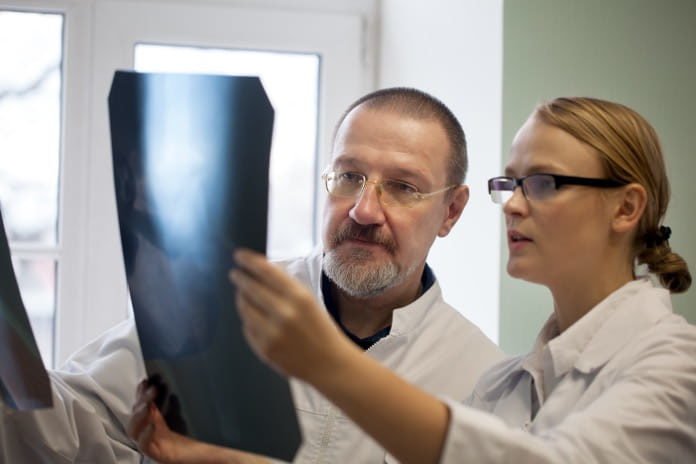A team of researchers studied whether lysostaphin injectable hydrogels were able to treat Staph orthopedic implant infections and support fracture repair.
Orthopedic implant infections are an important clinical problem. In the United States, over 11,200 orthopedic implant infections occur every year, with approximately 66% of these infections involving Staphylococcus bacteria. Orthopedic implant infections occur mainly through three ways: direct contamination of the implant, infection spreading to the implant from a nearby source, and implant infection due to a temporary presence of bacteria in the blood, leading to colonization of the implant by these bacteria.
The current therapies are limited to surgical removal of dead, damaged or infected tissue or use of systemic antibiotics with various possible side effects. The use of systemic antibiotics has its own limitations as it can lead to antibiotic resistance and opportunistic infections due to disturbances caused in the gut microbiota.
In a recent study, the researchers designed a PEG-based hydrogel that adhered to the exposed tissue and fracture surface and delivered an antimicrobial enzyme lysostaphin to the infected implant in femoral fractures in mouse models. This hydrogel had dual advantages: it released lysostaphin in response to local cell-based enzymes and simultaneously biodegraded during the tissue repair without the need for surgical retrieval. The researchers used multiple experimental approaches to evaluate the activity, stability, and release of lysostaphin encapsulated in the hydrogel. The findings of this study were published in Proceedings of the National Academy of Sciences (PNAS).
An enzyme activity assay showed that the hydrogel maintained lysostaphin activity for more than a period of two weeks. Injectable lysostaphin-delivering hydrogel showed greater activity in clearing the bacteria from infected implants and fractures as compared to the prophylactic antibiotic treatment. It also facilitated fracture repair and restored a sterile inflammatory environment in mouse models. The results of the study also established that lysostaphin delivering hydrogels are effective against antibiotic-resistant infections.
This lysostaphin delivering platform could be used as effectively for preventing and treating implant infections. This study raises an interesting aspect of whether this hydrogel approach might be used to solve the problem of recurrent infections in total joint arthroplasties and fracture fixation devices.
Written by Pratibha Duggal
References:
(1) Johnson CT1,2, Wroe JA1,2, Agarwal R2,3, Martin KE2,3, Guldberg RE2,3, Donlan RM4, Westblade LF5, García AJ6,3. Hydrogel delivery of lysostaphin eliminates orthopedic implant infection by Staphylococcus aureus and supports fracture healing. Proc Natl Acad Sci U S A. 2018;115(22).
(2) Ankur Singh. Bactericide hydrogel prevents orthopedic implant infections. Science Translational Medicine. 2018 (10).



